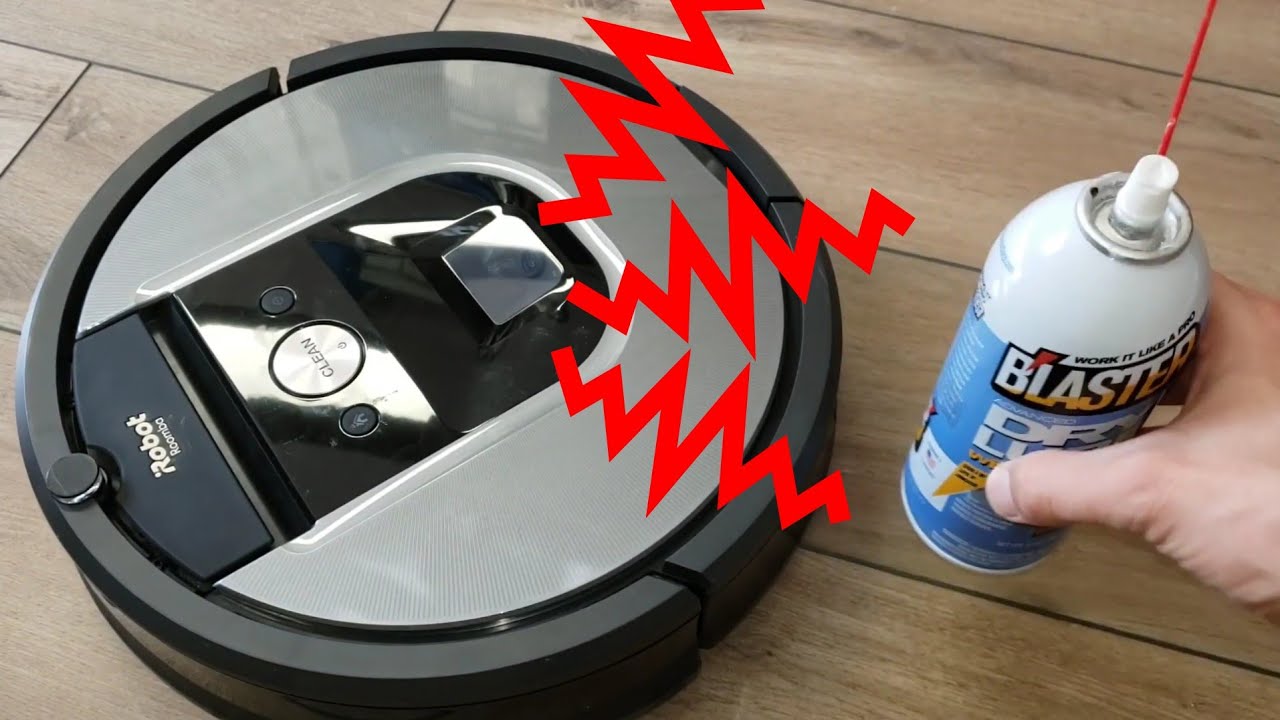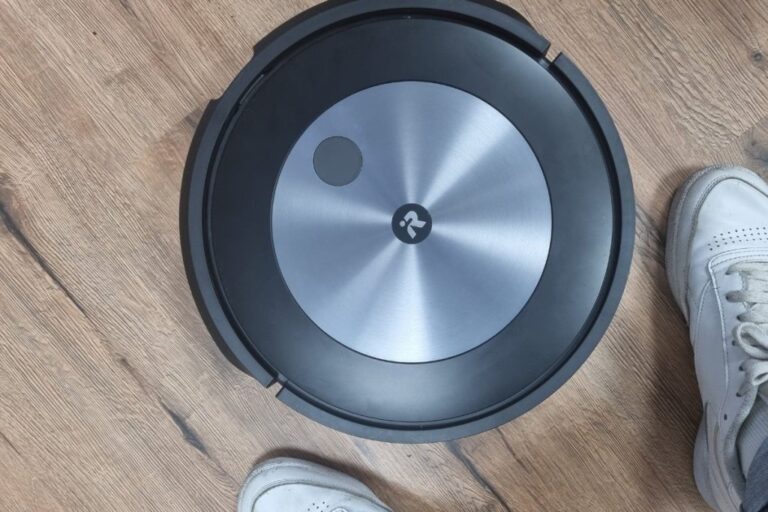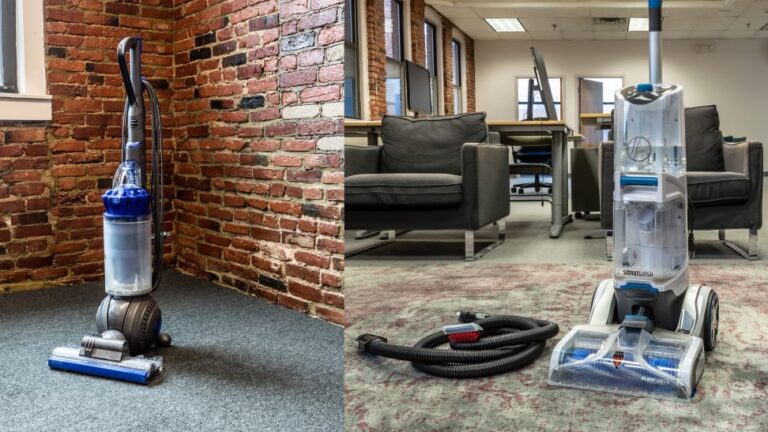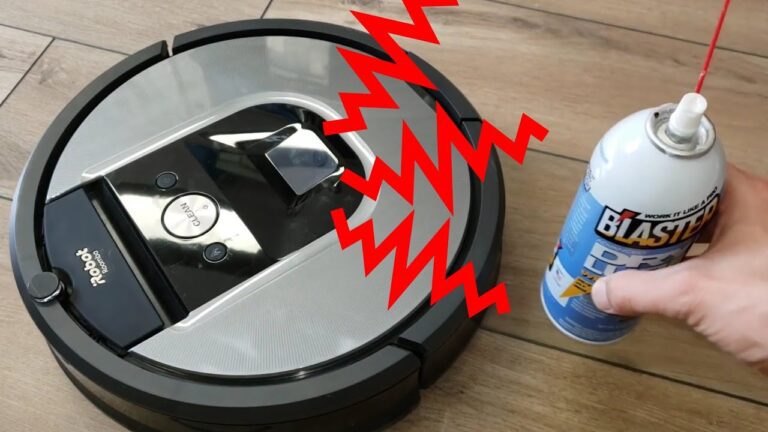Why is My Shark Robot Vacuum Making a Loud Noise?

Your shark robot vacuum is making a loud noise due to a potential issue with the motor or the brush roller.

Credit: howtofixit.net
Understanding The Causes Of Loud Noises In Shark Robot Vacuums
Are you experiencing a loud noise from your shark robot vacuum? Don’t worry, you’re not alone. Several factors can contribute to the unpleasant noise that your vacuum is making. In this section, we will explore the causes of loud noises in shark robot vacuums and provide some solutions to help you resolve the issue.
Loose Or Misaligned Brushes
One of the primary reasons for a loud noise in your shark robot vacuum is loose or misaligned brushes. Here’s what you need to know:
- Brushes not properly attached: If the brushes in your vacuum are not securely attached, they can cause loud noises. The vibrations from the motor may cause them to rattle or produce a grinding sound.
- Misaligned brushes: When the brushes are not aligned properly, they can scrape against the floor or other surfaces, resulting in a loud noise.
To fix these issues, follow these steps:
- Ensure that the brushes are tightly secured in their designated slots.
- Check if the brushes are aligned parallel to the floor. Adjust them if necessary.
Clogged Or Blocked Airflow
Another common cause of loud noises in shark robot vacuums is clogged or blocked airflow. Here’s what you should know:
- Clogged filters: If your vacuum’s filters are clogged with debris, dust, or pet hair, it can restrict the airflow, causing strain on the motor and resulting in a loud noise.
- Blockages in the suction pathway: Objects, such as small toys or large debris, may get stuck in the suction pathway of your vacuum. This can impede the airflow and lead to a loud noise.
To address these issues effectively:
- Regularly clean or replace the filters, based on the manufacturer’s instructions.
- Check the suction pathway for any blockages and remove them carefully.
Damaged Or Worn Out Parts
Finally, loud noises in your shark robot vacuum may be caused by damaged or worn-out parts. Consider the following factors:
- Belt issues: A worn-out or damaged belt can result in a loud squeaking or grinding noise when the vacuum is in use. This may require a replacement.
- Motor malfunctions: If the vacuum’s motor is not functioning correctly, it can produce unusual or loud noises. Professional assistance may be required in this case.
To resolve these concerns:
- Inspect the belt for signs of wear and tear. Replace it if necessary, following the manufacturer’s guidelines.
- If you suspect a motor malfunction, contact shark customer support or a professional technician for assistance.
By understanding the potential causes of loud noises in your shark robot vacuum, you can troubleshoot the issue and find the appropriate solution. Remember to always consult the manufacturer’s instructions for guidance on maintenance and repairs.
Troubleshooting Tips To Address The Loud Noise Issue
Shark robot vacuums are a convenient way to keep your floors clean and free of debris. However, if your shark robot vacuum starts making a loud noise during operation, it can be quite concerning. The good news is that there are several troubleshooting tips you can try to address this loud noise issue.
In this section, we will explore some effective methods to get your shark robot vacuum back to its quiet cleaning mode.
Inspecting And Cleaning The Brushes:
- Regularly inspect the brushes of your shark robot vacuum to ensure they are not tangled or clogged with hair, fibers, or other debris.
- Use a pair of scissors or a brush cleaning tool to carefully remove any tangled hair or debris from the brushes.
- Make it a habit to clean the brushes thoroughly after each cleaning session to prevent excessive noise caused by obstructions.
Clearing Blockages In The Airflow Path:
- Check for any blockages in the airflow path of your shark robot vacuum, including the dust bin and filters.
- Remove the dust bin and empty it, ensuring that there is no built-up debris obstructing the airflow.
- Clean or replace the filters as per the manufacturer’s instructions to promote proper airflow and reduce noise.
Checking And Replacing Damaged Parts:
- Inspect all the parts of your shark robot vacuum, such as the wheels, sensors, and other components, for any signs of damage or wear.
- If you notice any damaged parts, such as worn-out wheels or broken sensors, consider replacing them to eliminate the loud noise.
- Refer to the user manual or contact the manufacturer for guidance on identifying and replacing damaged parts correctly.
Remember, troubleshooting tips may vary depending on the model of your shark robot vacuum. Always refer to the user manual provided by the manufacturer for specific instructions and recommendations. By following these tips, you can minimize the loud noise issue and enjoy a quiet and efficient cleaning experience with your shark robot vacuum.
Regular Maintenance To Prevent Future Loud Noise Problems
Proper maintenance is crucial to keep your shark robot vacuum running smoothly and prevent it from making loud noises. Regular maintenance not only extends the life of your vacuum but also ensures optimal performance. Below are some key maintenance tips to help prevent future loud noise problems:
Cleaning And Maintaining The Brushes
Keeping the brushes clean and well-maintained is essential for the efficient operation of your shark robot vacuum. Here’s what you need to do:
- Remove tangled hair and debris from the brushes regularly to prevent clogging.
- Use a pair of scissors or a brush cleaning tool to remove any lodged hair or fibers.
- Clean the brush rolls thoroughly with warm, soapy water to remove dirt and grime.
- Allow the brush rolls to dry completely before reassembling them.
Regularly cleaning and maintaining the brushes will help reduce friction and minimize any potential loud noise issues caused by debris or hair buildup.
Ensuring Proper Airflow And Filter Maintenance
Proper airflow is crucial for the suction power and overall efficiency of your shark robot vacuum. To ensure optimal airflow and filter maintenance, follow these steps:
- Regularly check and clean the dustbin to prevent it from becoming overly full or obstructing airflow.
- Clean or replace the filters as recommended by the manufacturer.
- For reusable filters, rinse them thoroughly with water and allow them to dry completely before reinstalling.
- Check for any obstructions in the air pathways and remove any debris that may impede proper airflow.
By maintaining proper airflow and periodically cleaning or replacing the filters, you can minimize any potential loud noise issues caused by poor suction or blockages.
Replacing Worn Out Parts In A Timely Manner
As with any mechanical device, certain parts of your shark robot vacuum may wear out over time. To prevent loud noise problems, it is important to replace worn-out parts in a timely manner. Here’s what you should do:
- Regularly inspect the essential components, such as the wheels, brush rolls, and belts, for signs of wear or damage.
- If you notice any worn-out parts, contact the manufacturer or an authorized service center to obtain the correct replacement parts.
- Follow the manufacturer’s instructions or refer to the user manual to properly replace the worn-out parts.
By promptly replacing worn-out parts, you can maintain the optimal performance of your shark robot vacuum and prevent future loud noise problems.
Remember, by performing regular maintenance tasks like cleaning and maintaining the brushes, ensuring proper airflow and filter maintenance, and replacing worn-out parts in a timely manner, you can help prevent your shark robot vacuum from making loud noises and enjoy a quieter cleaning experience.
Frequently Asked Questions On Why Is My Shark Robot Vacuum Making A Loud Noise
Why Is My Shark Robot Vacuum Making A Loud Noise?
A loud noise from your shark robot vacuum could be due to a loose brush roll, debris stuck in the wheels, or a malfunctioning motor.
How Can I Fix The Loud Noise Coming From My Shark Robot Vacuum?
To fix the loud noise, try tightening the brush roll, cleaning any debris from the wheels, or contacting shark customer support for further assistance.
Is A Loud Noise Normal For A Shark Robot Vacuum?
While some noise is expected during operation, a loud noise could indicate a problem. It’s best to address it to prevent further damage to the vacuum.
Can A Clogged Filter Cause My Shark Robot Vacuum To Make A Loud Noise?
Yes, a clogged filter can restrict airflow and put strain on the motor, causing it to make a loud noise. Regularly cleaning or replacing the filter can help prevent this issue.
Should I Try To Repair My Shark Robot Vacuum Myself If It’S Making A Loud Noise?
If you are comfortable and have experience with appliance repairs, you can attempt to fix the issue yourself. However, it’s recommended to consult the user manual or contact shark customer support for guidance.
Conclusion
Identifying the cause of a loud noise in your Shark Robot Vacuum is key to resolving the issue. Regular cleaning and maintenance are essential for preventing such problems. If the noise continues despite basic troubleshooting, it’s advisable to consult the user manual or seek professional assistance. Remember, addressing the issue promptly can prevent further damage and extend the lifespan of your Shark Robot Vacuum, ensuring efficient and quiet operation.


